The Talon’s 2021 Diversity Audit
As student journalists, our job is to make sure that our coverage represents the diverse student body at Los Altos High School and the Los Altos community. The Talon’s goal is to provide holistic coverage that caters to the interests of the entire student body, not just a select portion, and make sure that every single student is represented through our newspaper.
The Talon strives to incorporate a wide variety of sources in our articles and cultivate a diverse staff to provide our community with nuanced stories about important issues. We owe you, our readers, utmost transparency, so we’ve put together a diversity report to explore how we can do better.
Staff
Our first step in assessing our newspaper’s diversity was to analyze our staff. We surveyed each member of The Talon’s staff along with each student in LAHS’s introductory journalism class on their race, age and gender.
Having a diverse staff is crucial — we want our coverage to span across all communities. We understand that each person brings a different insight to each article, so we aim to have individuals of different backgrounds involved in the construction of each article to ensure that we’re not ignoring crucial parts of the issue.
That being said, our staff isn’t as diverse as we’d like it to be. The breakdown of our staff’s racial and ethnic backgrounds demonstrates that our staff does not adequately represent our student body. We have a disproportionately small number of Latino reporters in our journalism program. While Latino students make up 22.4 percent of our school population, our staff is only 2 percent Latino.
Additionally, 2 percent of our journalism program is made up of Black students and 2 percent Pacific Islander students. While this is a somewhat accurate representation of our student population with 1.25 percent and 0.4 percent Black and Pacific Islander students respectively, none of these students are actively publishing for The Talon as they are currently in the introductory course.
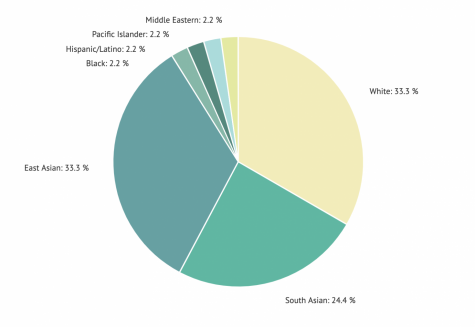
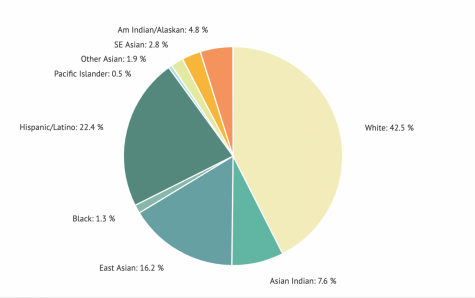
Our staff follows a similar pattern in gender. Around 70.5 percent of our staff identifies as female, 29.1 percent as male, 4.2 percent as gender fluid and 8.3 percent as nonbinary.
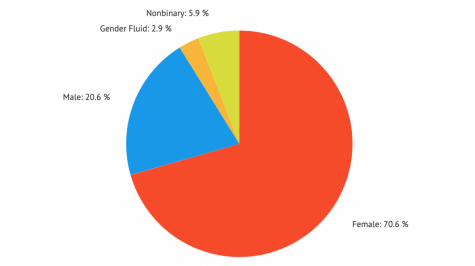
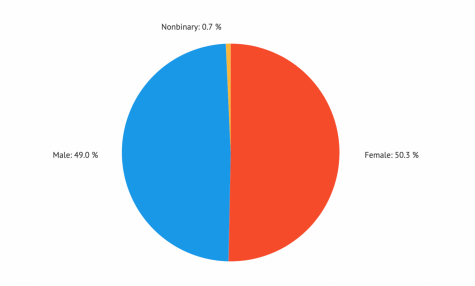
We cannot accurately compare these statistics to the whole school, which lists 50.3 percent of students as female, 48.9 percent of students as male and 0.7 percent of students as nonbinary because there have limited categories for gender identity that don’t necessarily match student body. However, we still recognize that The Talon can increase its gender diversity within its staff, especially in terms of reporters who don’t identify as male or female, and can clearly see that our gender breakdown isn’t proportional to our school’s population.
It’s clear that our staff isn’t diverse enough, and has a high percentage of Asian and white reporters, leaving out the perspective of a majority of our student body. We aim to bridge this gap through our Introduction to Journalism course.
This is the first year we’ve implemented this course, and we hope this course will make The Talon more accessible to interested students at Los Altos by allowing students of all backgrounds to experiment and learn through the lens of The Talon without the prior application process. We understand that an application can be a large barrier to entry for students with less journalism experience or educational support, and may be one of the reasons our numbers do not accurately represent the student body.
At the end of the year, students will filter into one of LAHS’s journalism programs: The Talon, New Media Lit or Yearbook. Students of all backgrounds are encouraged to take Introduction to Journalism, and the course will open the possibility of pursuing a position in Talon to many more students than before; we hope this program will support our goal of cultivating a more diverse staff.
Sources
We’re also committed to achieving inclusive coverage by interviewing a wide variety of sources. We took a sample of all articles that The Talon published so far this school year and analyzed the demographics of the sources interviewed.
Looking at the data, we realize that we interview more white students than any other percentage of students combined. While white students do make up the majority of our student body, we don’t want to leave out the perspectives of other groups in our community.
Only 2 percent of the sources we’ve interviewed this year have been Latino showing that we’ve done an inadequate job of incorporating Latino student perspectives into our coverage. Although the percentages for Black and Pacific Islander sources are similar to school statistics, the number of sources we’ve interviewed overall is small, so the summary statistics for the population may paint a false narrative.
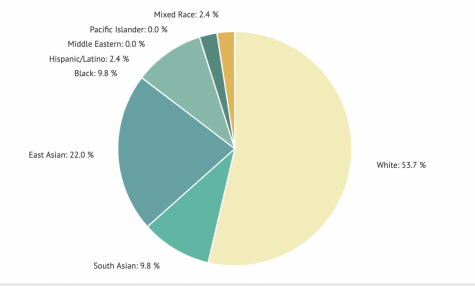
The breakdown of gender for our sources follows a similar trend as our staff report: 60 percent of sources we’ve spoken to this year have been female, 35 percent have been male and 5 percent identified as another gender. Just as with our staff report, we cannot make accurate conclusions about our gender breakdowns in relation to school data, but recognize that we need to seek out more sources who identify as a gender other than male or female.
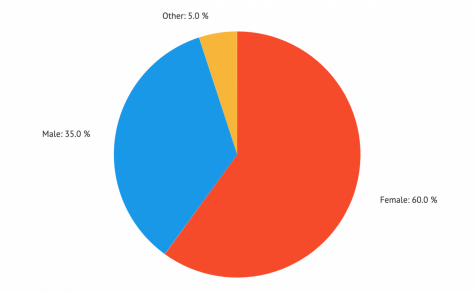
Our skewed source racial and gender breakdown shows that we simply don’t interview enough sources. When tackling stories, reporters are encouraged to interview at least three or more sources to make sure our coverage tells the full story of a certain issue. However, we’ve seen that a guideline isn’t enough, and has contributed to reporters typically interviewing the sources that are easier to reach and more easily provide The Talon with information.
We’re going to push reporters to interview more sources, as well as sources that represent a more diverse array of perspectives, regardless of how easy they are to reach. The journalistic integrity of our paper shouldn’t be compromised for convenience.
Moving Forward
We understand that we’re not doing enough to represent all of LAHS’s student body. Our staff and source backgrounds are heavily skewed, and our perspectives do not fully represent our school.
But we’re determined to improve the diversity of our journalism program, both in our staff and our sources. As journalists, it’s our responsibility to seek out the underrepresented, to listen to their stories and amplify their voices.
It is our duty to be 100 percent honest in our newspaper’s policies, so we’re sharing our plan. It’s easy for us to make all these promises in our newsroom and never follow through, but by publishing our plan, we invite you to hold us accountable.
We believe it’s crucial for all publications to run diversity reports and view them under a critical lens — by doing so, we’re taking the first step toward building a transparent relationship with our student body.



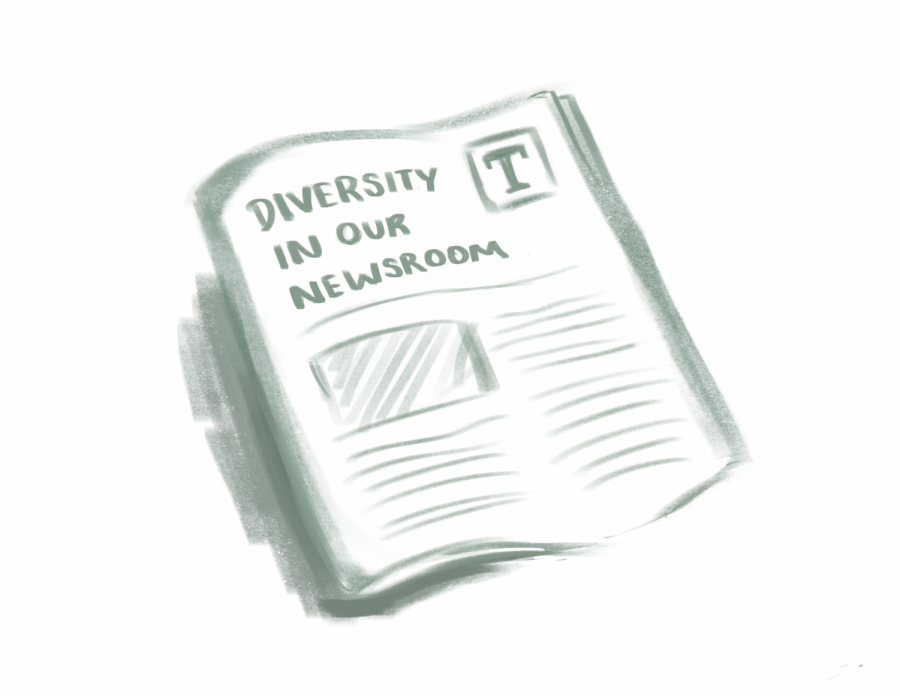
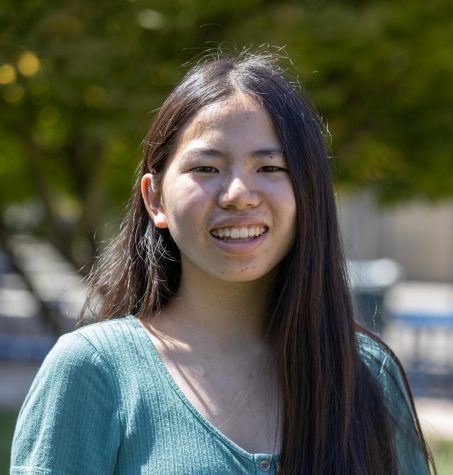
Isabel Van Campen | Oct 11, 2021 at 8:35 am
Love this transparency Olivia. This is how things change! Thanks for this article!
X | Oct 7, 2022 at 8:55 am
This is how what changes exactly? The Talon is already run by non-white women and has been for years. Whites are underrepresented by 10% and males by 30%(!!!) with no mention in this article about trying to add more representation from these groups. It’s clear that the Talon does NOT want or care about these groups’ viewpoints. As a former member of the newspaper, I can say that white and male ideas are actively excluded and stepped on throughout the process. In this way the Talon, subconsciously or otherwise, mimics our mainstream institutions and media from which they learned this behavior, and the data is right there to show it. Then, just like our leaders, they have the gall to be horrified by racist backlash when it occurs on campus.